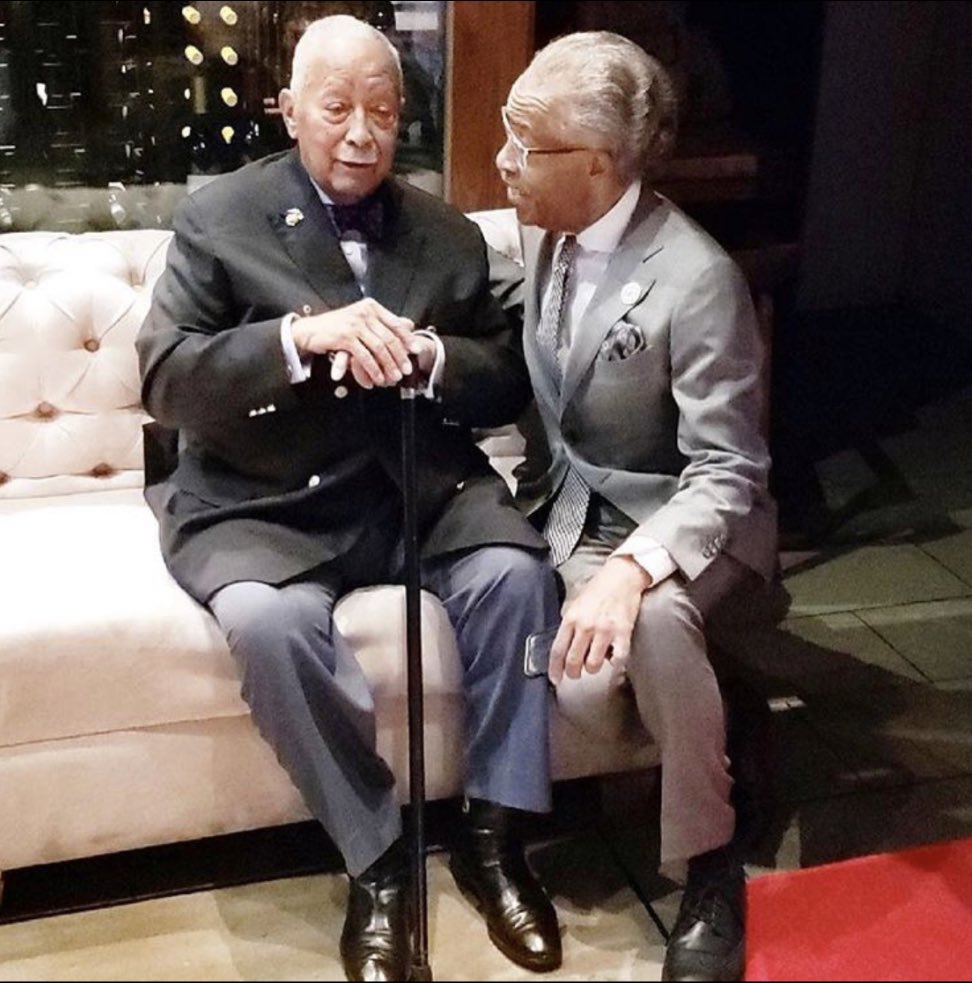NAN Celebrates Black History, Honoring Mayor David Dinkins
Every day during Black History Month, we will honor chapter leaders, advocates, and partners who are shaping Black History now.
(February 9th, 2021) — Today, we honor Mayor David Dinkins.
David Dinkins became the first African American to serve as mayor of New York City following his election victory in 1989. He came into office at a time when the city was bitterly divided and race relations were strained. As the 106th mayor – the first and only Black mayor ever in New York City – set the tone of unity and respect even when it was not shown to him. He epitomized strength with grace, and he made the city and this country a better place. For the Black community, Dinkins represented what was possible and how to stand tall in severe opposition with dignity and perseverance.
Born in Trenton, New Jersey, in 1927, David Dinkins attended Howard University and Brooklyn Law School. He began his career in New York City politics in the 1960s, ascending to the city clerk and Manhattan borough president before becoming the NY’s first African American mayor in 1989. While Dinkins took key steps towards revitalizing the city’s economy and increasing community development; his accomplishments were offset by a recession, rising homicide rates, and flaring racial tensions.
When Dinkins was elected in 1989, the city was suffering from incident after incident, including the death of 16-year-old Yusuf Hawkins, who was attacked by a white mob in Bensonhurst, Brooklyn. It was also the year that five Black and brown teenagers were arrested for a crime that they did not commit (Donald Trump bought full-page ads in major papers calling for the death penalty to be reinstated against the five). This was the backdrop into which Dinkins stood with grace and worked to heal the city and bridge the divide.
He launched the New York City Safe Streets, placed more police offers on the streets through Safe City Program, and fostered increased community involvement through the Beacon Initiative. There was intense scrutiny and ugliness that he faced – including protests from off-duty police officers who didn’t like that he called for a Civilian Complaint Review Board. No matter what people said, did or wrote about him, he rose above the fray and continued to unite and lead. He served to bring fairness and equality, especially to those who rarely receive it. Additionally, he signed key development deals to revitalize the city’s economy: with Disney, which led to the renovation of Time Square, and with the United States Tennis Association, which kept the U.S. Open in Queens.
In 1999, Reverend Al Sharpton, Mayor David N. Dinkins, Congressman Gregory W. Meeks, Congressman Charles B. Rangel and others were arrested yesterday as they staged a protest at Police Headquarters in lower Manhattan over the police killing of Amadou Diallo.
Dinkins’ administration and agency leaders were the most diverse and progressive in the history of New York City politics. Two women became deputy mayors; others were commissioners of significant areas like finance and housing. The Mental Health Commissioner was a Black openly gay psychiatrist, and the Fire Commissioner was Puerto Rican.
Dinkins was the most inclusive mayor of a city that was the center of the world – or as he liked to refer to it, a “gorgeous mosaic.” However, Dinkins wasn’t just words; he ensured that leadership reflected this great city’s diversity.
After leaving City Hall, he began hosting a radio program called “Dialogue with Dinkins.” He also joined the faculty of Columbia University’s School of International and Public Affairs (SIPA), through which he began hosting the annual David N. Dinkins Leadership & Public Policy Forum.
Dinkins served as a board member of numerous organizations, including New York City Global Partners, the Children’s Health Fund, and the USTA. In 2012, he received a Congressional Gold Medal for his service with the Montford Point Marines, and the following year he published a memoir, A Mayor’s Life: Governing New York’s Gorgeous Mosaic.
In 2015, Dinkins was honored for his decades of public service when one of lower Manhattan’s architectural landmarks were renamed the David N. Dinkins Municipal Building.
Dinkins died from natural causes on November 23, 2020, at the age of 93.
